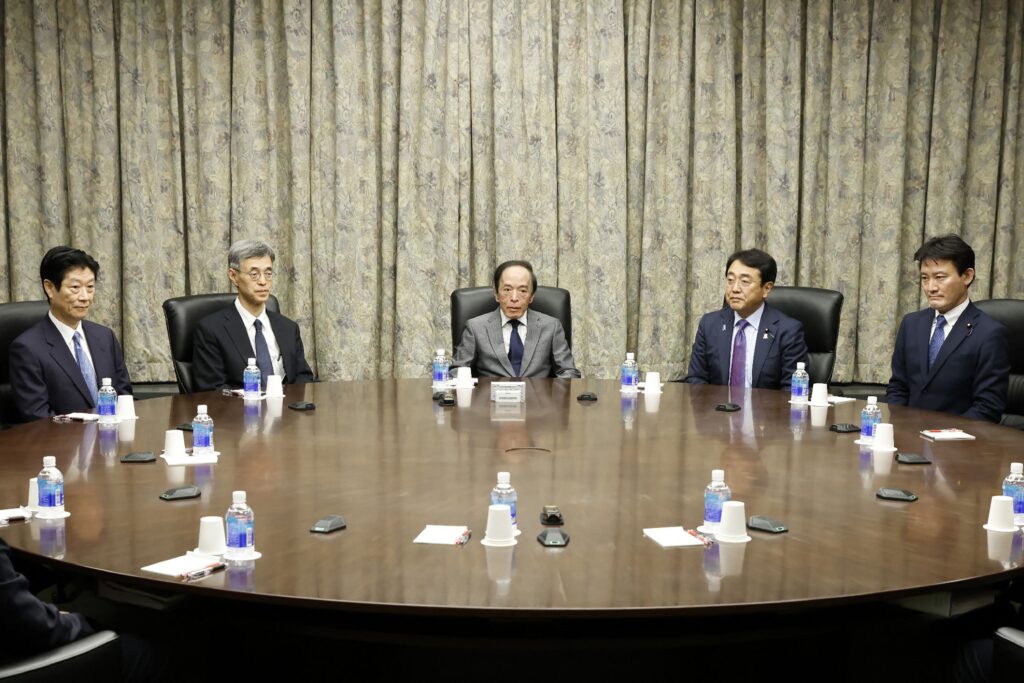
- ARAB NEWS
- 05 Jul 2025

TOKYO: The Bank of Japan maintained ultra-easy monetary settings on Tuesday in a widely expected move, as policymakers allow more time to determine whether wage increases will broaden enough to keep inflation sustainably at its 2% target.
However, underlining its growing conviction that conditions for phasing out its massive stimulus was falling into place, the central bank said the likelihood of the economy achieving durable 2% inflation continued to “gradually rise”.
Traders are focusing on any clues by governor Kazuo Ueda on how soon the BOJ will pull short-term rates out of negative territory, which is seen as the next move Ueda will take in dismantling his predecessor’s radical stimulus programme.
“Consumer inflation is likely to increase gradually toward the BOJ’s target as the output gap turns positive, and as medium- to long-term inflation expectations and wage growth heighten,” the BOJ said in a quarterly outlook report.
“The likelihood of realising this outlook has continued to gradually rise, although there remain high uncertainties over future developments,” the report said in a newly added phrase on prospects for hitting its price target.
At the two-day meeting that concluded on Tuesday, the BOJ left unchanged its short-term rate target at -0.1% and that for the 10-year bond yield around 0%.
The yen slipped after the decision, last trading down 0.2% at 148.30 per dollar.
“The BOJ decided to stand pat probably because it wanted more evidence a virtuous cycle of wage growth and prices will take hold,” said Izuru Kato, chief economist at Totan Research, adding that he expects the bank to end negative rates in April.
In the quarterly report, the BOJ cut its core consumer inflation forecast for the fiscal year beginning in April to 2.4% from 2.8% projected in October. It slightly revised up its forecast for fiscal 2025 to 1.8% from 1.7%.
The board left unchanged its forecast that an index gauging trend inflation will hit 1.9% in fiscal 2024 and 2025.
Ueda is expected hold a press briefing to explain the decision at 0630 GMT.
The BOJ’s meeting precedes that of the European Central Bank on Thursday and the U.S. Federal Reserve next week, both of which aggressively tightened monetary policy last year and are now contemplating cutting interest rates ahead.
Japan has seen inflation exceed the BOJ’s target for well over a year. But Ueda has stressed the need to hold off on raising rates until there is more evidence that inflation will durably stay around 2%, accompanied by solid wage growth.
Surveys and comments from business lobbies have shown an increasing chance Japan’s spring wage hikes will be above last year’s 30-year high 3.58% for major firms – a key prerequisite set by the BOJ for exiting ultra-loose monetary policy.
But the chance of success in meeting another prerequisite, which is a steady rise in services prices, remains uncertain.
While services prices have crept up, the increases are concentrated on sectors benefiting from a rebound in inbound tourism or where labour shortages are acute.
Markets are focusing on whether Ueda will sound more optimistic about prospects for wages to keep rising in tandem with inflation at his post-meeting briefing, which would signal an increasing chance of an end to negative rates in March or April.
Reuters